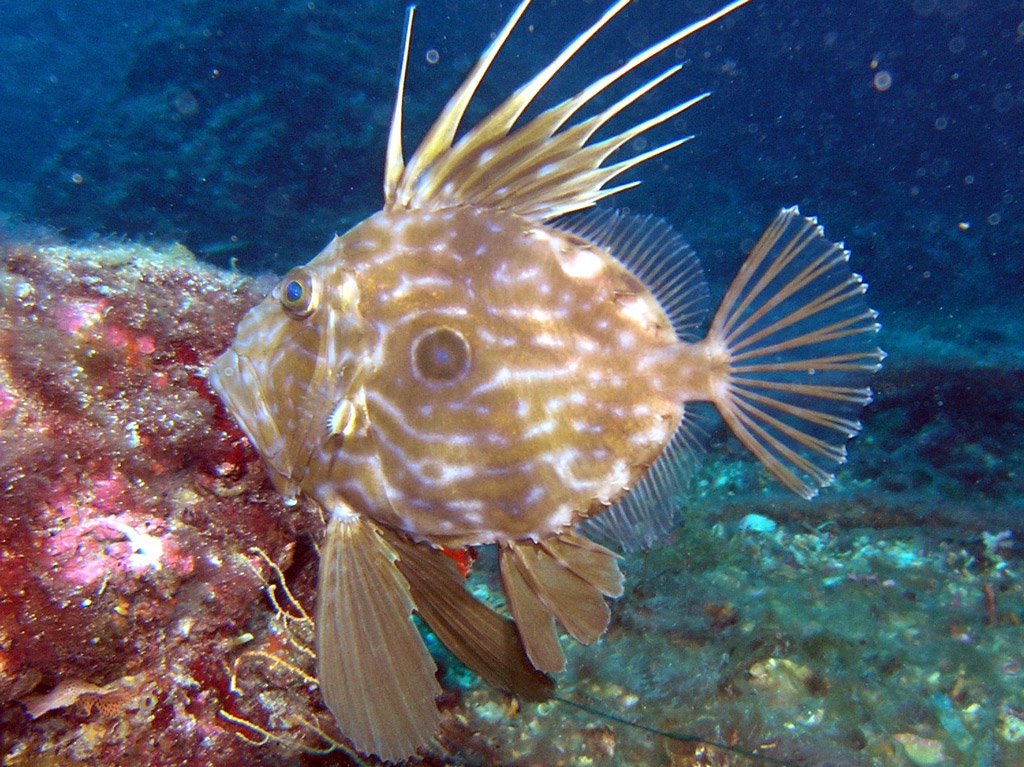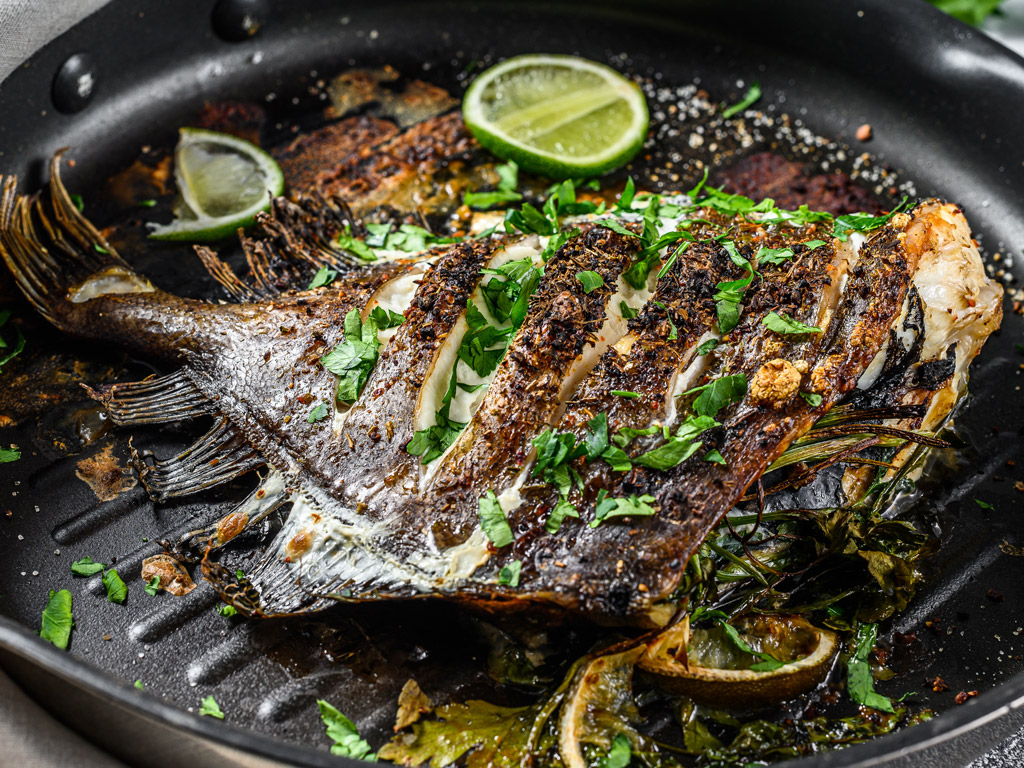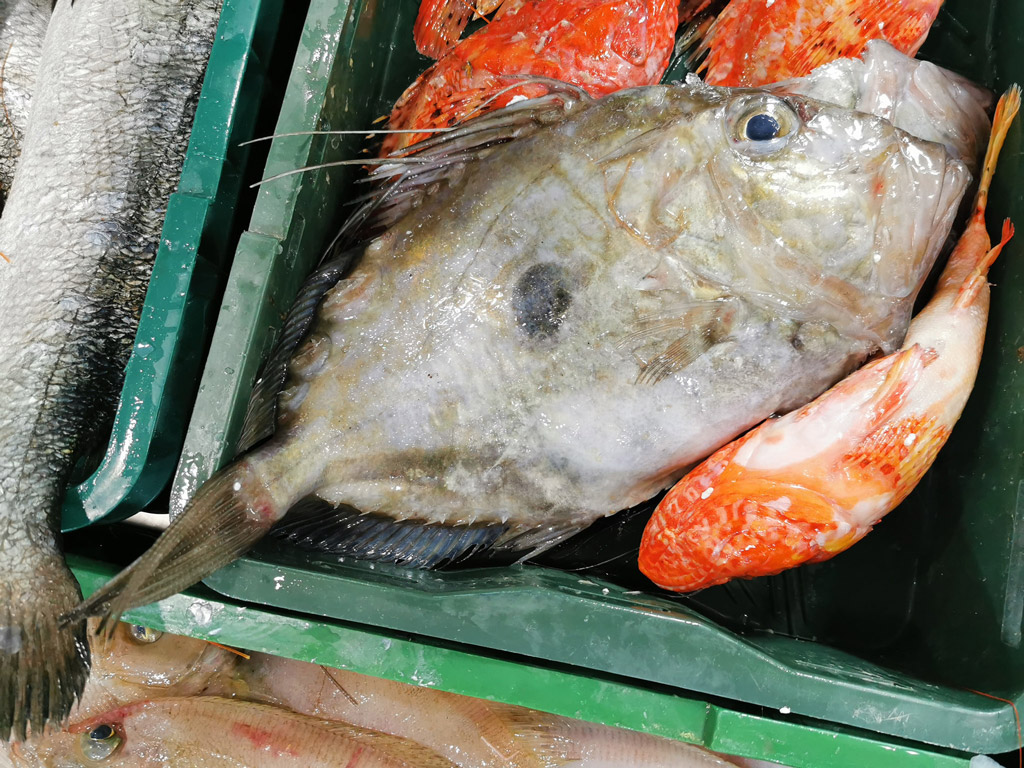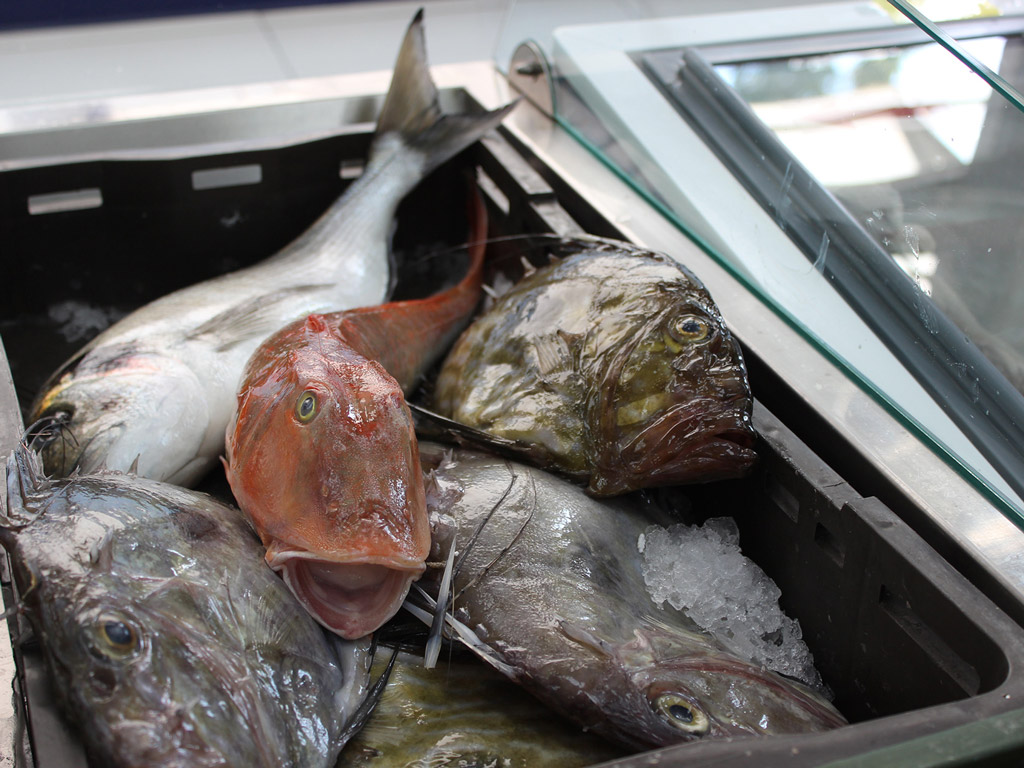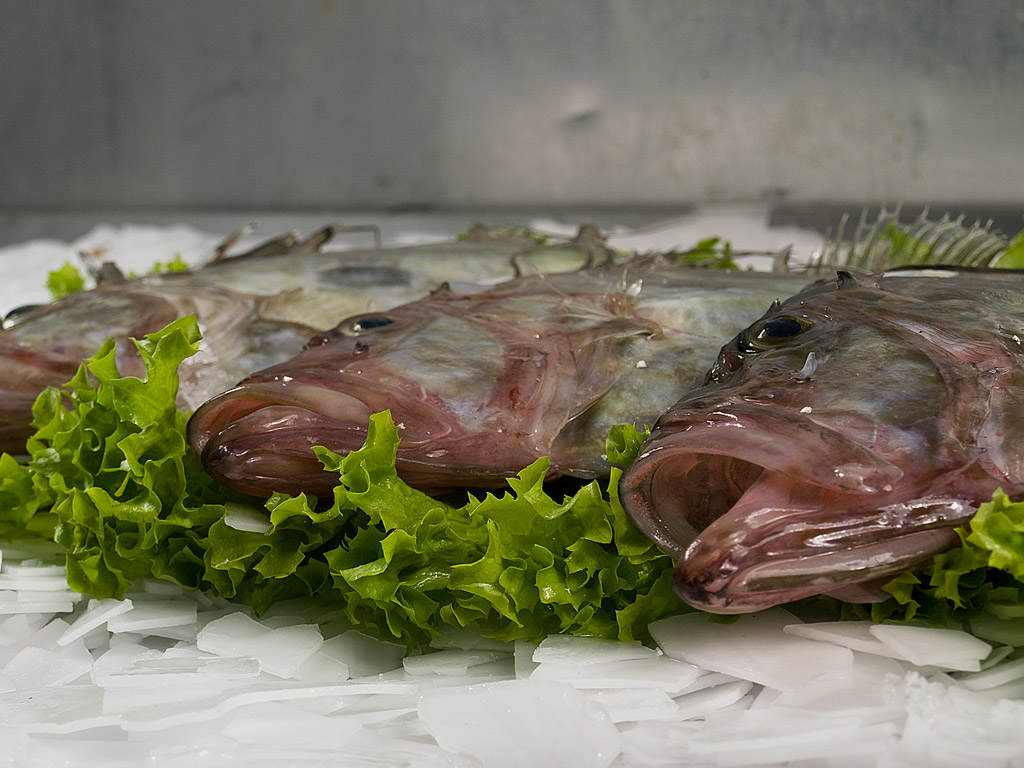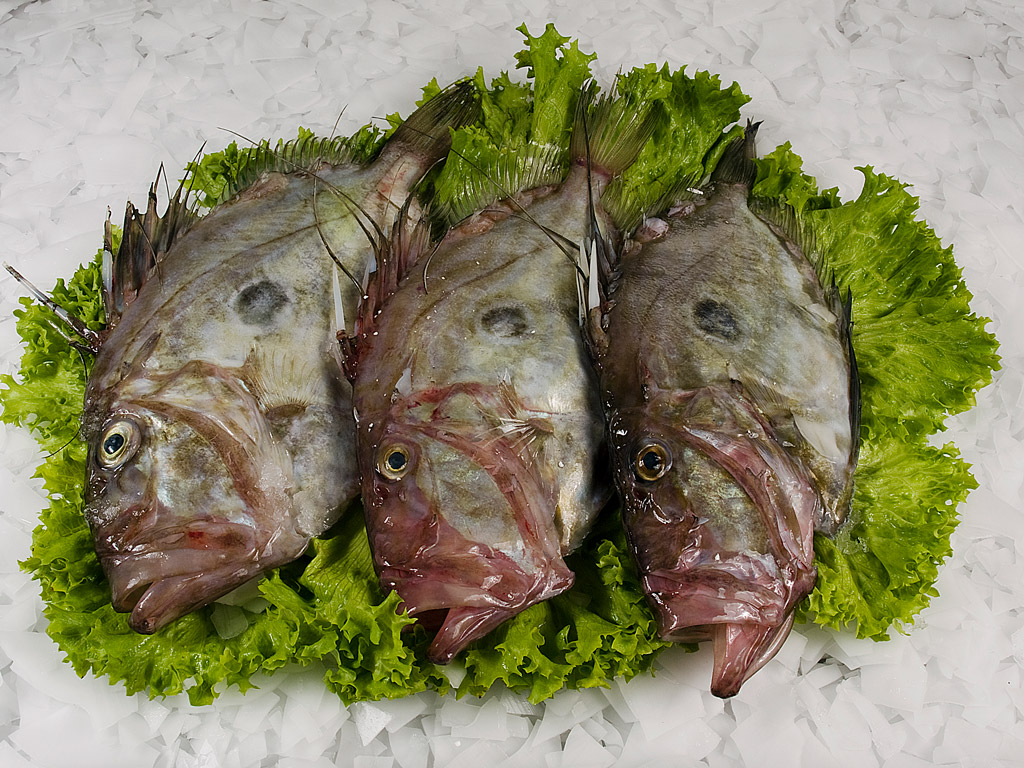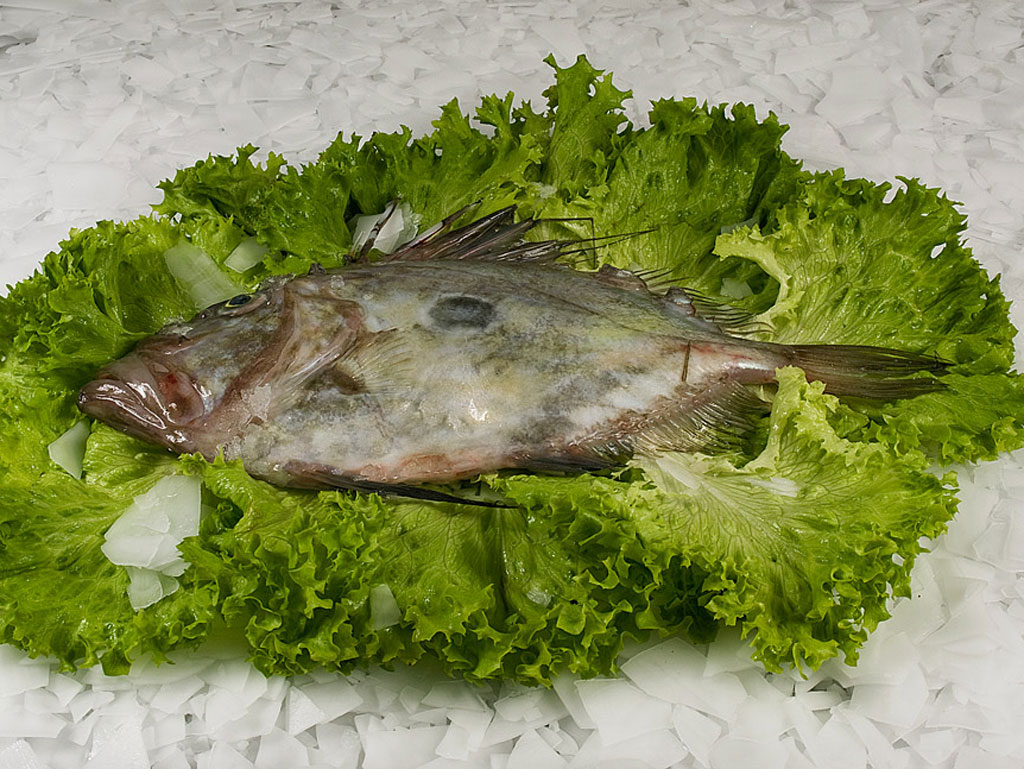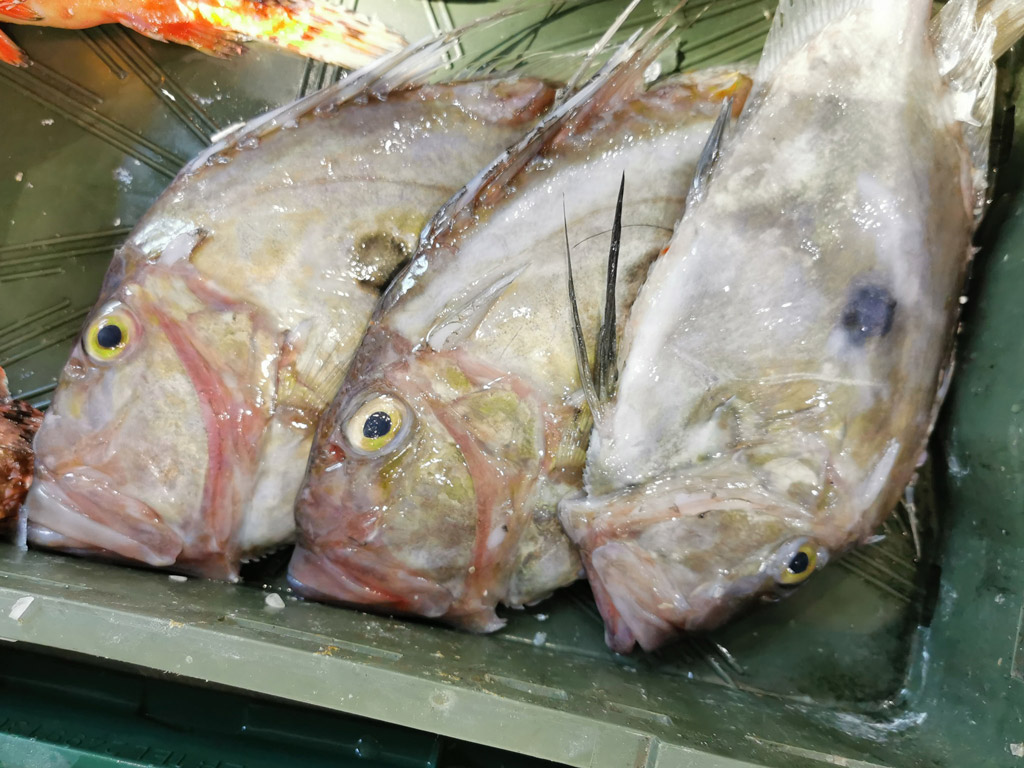
John Dory
lat. Zeus faber
John Dory
Its body is covered with small, sharp shells. Its first dorsal fin is unusally long and with 10 long spines on it. It has an olive yellow body with silvery white belly. On both sides there is a charasteristic dark spot which has served as a reference for the most of its names.
It can grow up to 90 cm in length and take up to 8 kg. It has been recorded the oldest one had lived up to 12 years. It mostly inhabits the depths of 50 to 100 m but it can be found deeper as well. It’s a poor swimer as it mainly moves slowly and it’s not too agile. For the most part it lives close to bottom of all types. It feeds on smaller fish, fish young, crabs and cephalopds. To compensate clumsiness in swimming, it catches the prey by stalking and sucking it by extending the jaw forward. It spawns at the end of winter and the beginning of spring. Its eggs are pelagic.
There are many legends of its name origin. One of it mentiones St.Peter who had been catching the fish with his bare hands. According to the legend, the dark spots came as a mark of his fingers. That’s why it is called the fish of St. Peter or ”šampjer” in Italian.
Energy value of 100g of fresh John Dory is 82 kcal/341.4 kj of what 1.9% is fat and 16.1% proteins. Minerals contained in John Dory fish: potassium (151 mg), magnesium (42,10 mg), selenium (24 μg), calcium (33.60 mg), iron (0.96 mg), iodine (16,10 mg).
Vitamins contained in John Dory: B complex vitamins, thiamine (0.08 mg), riboflavin (0.1 mg), niacine (6.30 mg), vitamin B6 (0.38 mg), vitamin B9 (11.20 μg), vitamin B12 (1.10 μg), vitaamin D (1 μg).John Dory is highly praised fish due to high percentage of quality proteins and low fat percentage what makes it suitable for athletes, people who want to reduce body mass and general population. It’s rich in vitamins and minerals necessary for the organism functioning, such as B12, selenium, iodine. Its meat also contains monosaturated and polyunsaturated fatty acids of which the most important are EPA and DHA.



